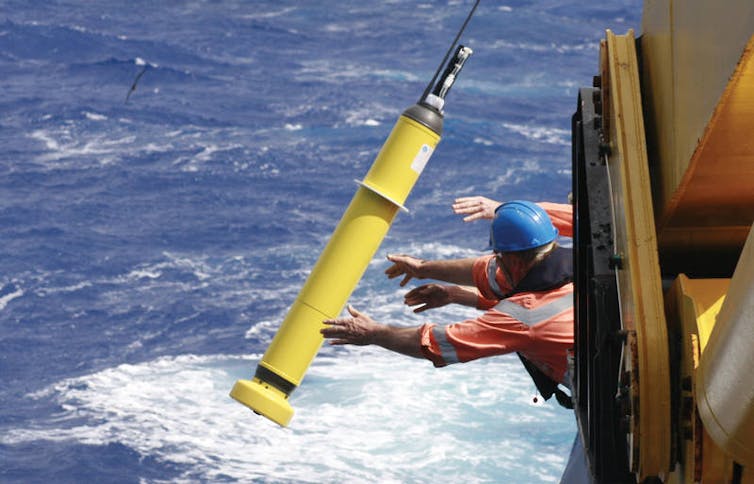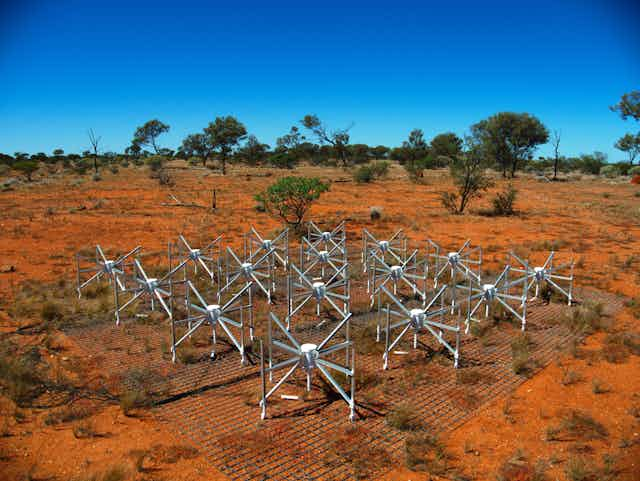When you see the word “infrastructure”, the first thing conjured in most people’s minds is roads, bridges and rail. These are, after all, the most visible portion of the A$100 billion of infrastructure that the nation is currently investing in.
But there is another kind of infrastructure that is just as critical to Australia’s economy and future which you probably haven’t heard of. That is the national infrastructure that underpins our scientific research and development.
Over the past decade the nation has invested A$2.5 billion in national research infrastructure investment across a diverse range of 27 facilities.
These include telescopes that allow astronomers like myself to undertake internationally significant scientific research. As well as leading edge imaging devices that enable companies like Cochlear to remain at the forefront of their industry.
Another example is the Integrated Marine Observing System. This provides valuable observations used for predicting everything from where the wreckage of missing Malaysia Airlines flight MH370 may have drifted, to information used to predict the seasonal forecasts so valuable for Australia’s farmers.
Much of this infrastructure was provided through the National Collaborative Research Infrastructure Strategy (NCRIS) announced in 2004 by the then Minister for Education, Science and Training, Julie Bishop. It was an innovative five year program that strategically invested in research infrastructure in a coordinated way across the nation.
Widely applauded across the sector, the initiative lost momentum under Labor starting in 2011, when it was not funded.
Instead, a band-aid solution was applied in 2012, funded by money destined for universities, to keep facilities from shutting down. This piece-meal approach was extended through a short-term program to fund operations available for the 2013-14 financial years.
Framework for science
Many scientists have commented on the loss of the strategic value embedded in the original NCRIS program, including myself and Peter Doherty in 2013.
However, the community was positively reassured when in 2014, as part of its first budget, Minister Christopher Pyne announced A$150 million for NCRIS for 2015-16 to allow the research infrastructure of the nation to continue to operate. And, very importantly, this created a path to the future by initiating Review of Research Infrastructure chaired by Philip Clark AM. This panel is expected to provide an interim report in a few weeks and deliver its final report in May.

It is the supreme hope of the research community that this report will once again provide the framework for a long-term strategic investment strategy for the nation that the government can invest in.
It is therefore almost unthinkable that the community now finds itself on the verge of calamity. The A$150 million of funds, promised in the 2014 Budget, have not been released by the Government due to the release being linked to the passage of the Higher Education Bill.
There is less than five months until insolvency for some facilities, and no sign that the higher education reforms will pass, despite their support from the higher education sector. Thus panic is beginning to creep into many of 27 research facilities, with key members of staff becoming increasing unsure of their future.
As they should be. Some facilities will need to start terminating their employees at the end of the month to ensure their balance sheets add up in June. These are highly skilled workers whom you cannot just recruit with an advert on Seek, so we are already losing significant capacity.
Funding science into the future
Catastrophe is if we still do not have a resolution before the 2015 budget in May. At this point it will be necessary for a wholesale winding down of the nation’s scientific infrastructure capability.
And just like if a key infrastructure provider, such as Telstra, needed to shut down and quit providing services, the damage will be immense. This will not just be to the facilities themselves, but to the nation as a whole, through the effects on the A$30 billion of R&D spent each year and the 35,000 people which depend on the infrastructure provided.
Higher education needs to be reformed, although I am concerned by the current proposal. However, my discussions with cross bench senators suggest that the prospects of any higher education reform package passing the Senate before May are low.
This is why the Research Alliance, a group of scientific, research and university bodies, today have written an open letter calling on the prime minister Tony Abbott to honour the government’s commitment to this infrastructure program.
Our national research infrastructure needs an urgent solution independent of the higher education reform package, and I beg the Senate and the government to find a solution.
The cost of not doing so will dwarf the A$150 million one-off payment this year.

